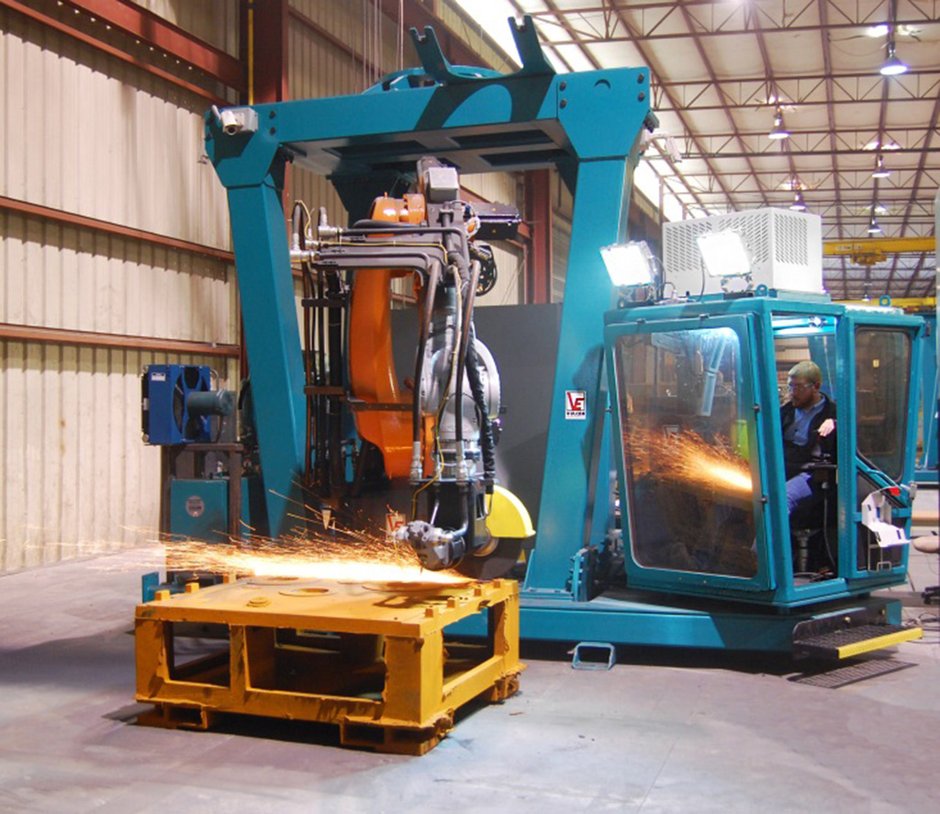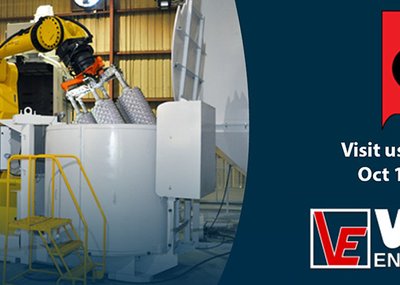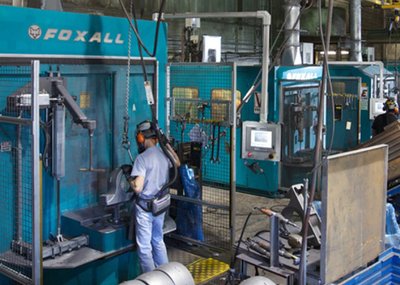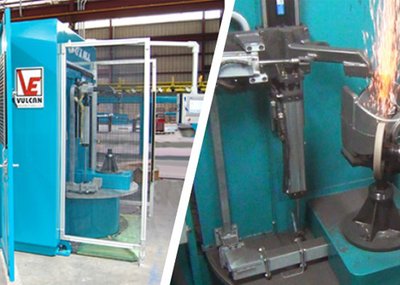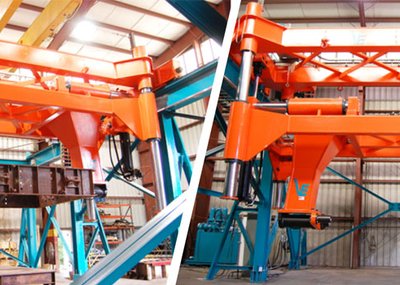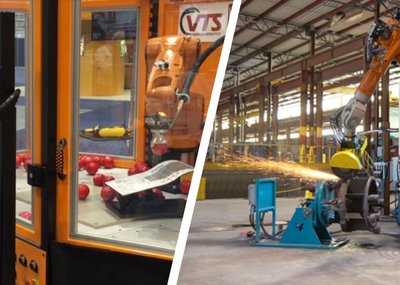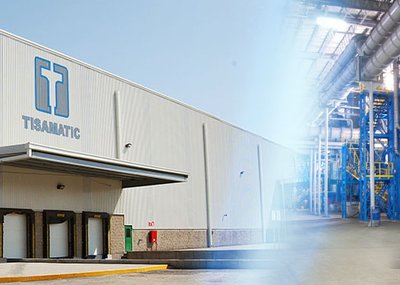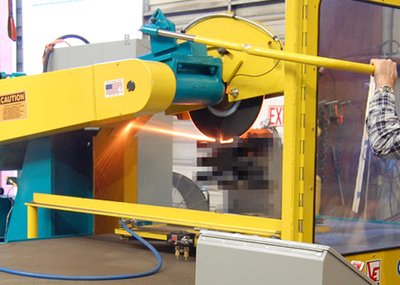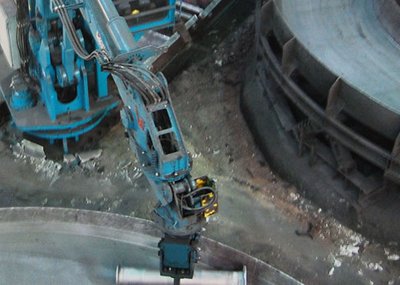Since Vulcan Engineering Co. launched to the new VTS™ (Vulcan Tactile System) in January of last year, there have been many questions. Vulcan has been using the phrase "Robotic/Manipulator" because it just seemed to fit. However, this might have caused a few bewildered looks. Simply, the VTS™ is the best of both worlds and can be used as a Robot or as a Manipulator.
Some have seen images of the system and quickly assume that this is just another way to use robots for automation… not quite. Although the VTS™ utilizes an industrial robot, this system is not just for programming and walking away while the robot does the rest (albeit, that is one of its capabilities). We in this industry know what industrial robots can do, so what’s different about the VTS™?
Using leading edge robotic/manipulator technology paired with Vulcan’s specialized hand control system, this telemanipulator allows the operator to manually control the robot’s movements. That means the operator moves the robot simultaneously with his hand movements for a true "hands on" experience. Some might compare this to jogging with a teach pendant, but Vulcan’s hand control system is very different.
First, the operator’s hand position likewise commands the robot’s “hand” (tool) position. Unlike jogging with the teach pendant (velocity control mode) that is difficult to coordinate motions of multiple axes, the VTS™ controls provide very smooth and precise movements. Movements can be scaled up or down as needed for the task at hand. One might say it moves with surgical precision. Secondly, there is force sensing at the robot’s tool that is transmitted back to the operator’s hand. This provides a feel of the forces the operator is applying with the robot. Another way to explain this is to think of the operator as holding the tool on the end of the robot. Wherever his hand moves, the machine is following his motions performing the work with multiples of force and speed.
The unique design and flexibility of the VTS™ enables floor operators, unskilled in robotic programming, to utilize the full range of control over robotic equipment in fully manual and semi-automatic modes. In addition, this same equipment system, utilizing dedicated fixturing, ordinary robotic programming and only minor adjustments can then also be applied to fully automatic tasks.
To clarify, the VTS™ is intended to be a manual machine a manipulator. BUT, with a few add-ons of equipment, it can be utilized as a fully automatic (unattended) robot. This might be useful if you have a need for manual processes some of the time and automatic processes at other times.
The configuration pictured here is the VTS-G model. This machine is provided with a high-power grinding attachment for a tool. With this, the operator can grind and cut around the outside and inside of castings. In addition, the model shown is mobile. The whole unit can be moved via stacker crane or rail-car. This makes it possible to access a very large working envelope. The envelope is only limited by the working envelope of your crane or the length of your rails.
Putting these features all together, the operator of Vulcan Engineering’s VTS™ can perform a job manually by using the power of a robot no matter the application. For more information on the VTS™ and its “hands on” capabilities.

